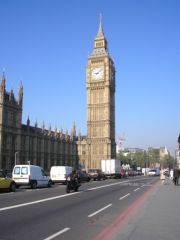| £ | ||
| Fiscal year | THINK! campaign | Child/teen expenditure |
|
2009-10 |
18,602,057 |
3,783,253 |
|
2010-11 |
2,342,563 |
1,285,509 |
|
2011-12 |
3,995,586 |
705,600 |
|
2012-13 |
(1)3,570.000 |
(1)78,000 |
| (1) Provisional out-turn | ||
| Language | Test type | Number of tests |
|
Albanian |
Bike |
1 |
|
Albanian |
Car |
281 |
|
Arabic |
Bike |
19 |
|
Arabic |
Car |
5160 |
|
Bengali |
Bike |
12 |
|
Bengali |
Car |
6600 |
|
Cantonese |
Bike |
8 |
|
Cantonese |
Car |
7656 |
|
Dari |
Bike |
1 |
|
Dari |
Car |
767 |
|
Farsi |
Bike |
57 |
|
Farsi |
Car |
4964 |
|
Gujurati |
Bike |
9 |
|
Gujurati |
Car |
2027 |
|
Hindi |
Car |
986 |
|
Kashmiri |
Car |
4 |
|
Kurdish |
Bike |
7 |
|
Kurdish |
Car |
6486 |
|
Mirpuri |
Car |
287 |
|
Polish |
Bike |
480 |
|
Polish |
Car |
12049 |
|
Portuguese |
Bike |
107 |
|
Portuguese |
Car |
2344 |
|
Punjabi |
Bike |
20 |
|
Punjabi |
Car |
8401 |
|
Pushto |
Car |
384 |
|
Spanish-Castilian |
Bike |
27 |
|
Spanish-Castilian |
Car |
983 |
|
Tamil |
Bike |
7 |
|
Tamil |
Car |
6409 |
|
Turkish |
Bike |
41 |
|
Turkish |
Car |
8891 |
|
Urdu |
Bike |
38 |
|
Urdu |
Car |
23914 |
|
Total |
99427 |
In 2012, DSA also conducted a total of 2,085 driving theory tests with a foreign language translator present. The numbers of theory tests delivered with a foreign language translator present broken down by language and test type are:
| Language | Test type | Number of tests |
|
Bosnian |
Car |
1 |
|
Bulgarian |
Car |
24 |
|
Cantonese |
Car |
1 |
|
Czech |
Car |
2 |
|
Farsi |
Car |
1 |
|
French |
Car |
5 |
|
Hebrew |
Car |
16 |
|
Hungarian |
Car |
30 |
|
Hungarian |
Bike |
4 |
|
Italian |
Car |
1 |
|
Lithuanian |
Car |
301 |
|
Mandarin |
Car |
420 |
|
Mongolian |
Car |
1 |
|
Punjabi |
Car |
5 |
|
Romanian |
Car |
677 |
|
Romanian |
Bike |
3 |
|
Russian |
Car |
314 |
|
Serbian |
Car |
1 |
|
Slovak |
Car |
30 |
|
Somali |
Car |
201 |
|
Spanish-Castilian |
Car |
1 |
|
Thai |
Car |
17 |
|
Turkish |
Car |
5 |
|
Urdu |
Car |
21 |
|
Vietnamese |
Car |
3 |
|
Total |
2085 |

